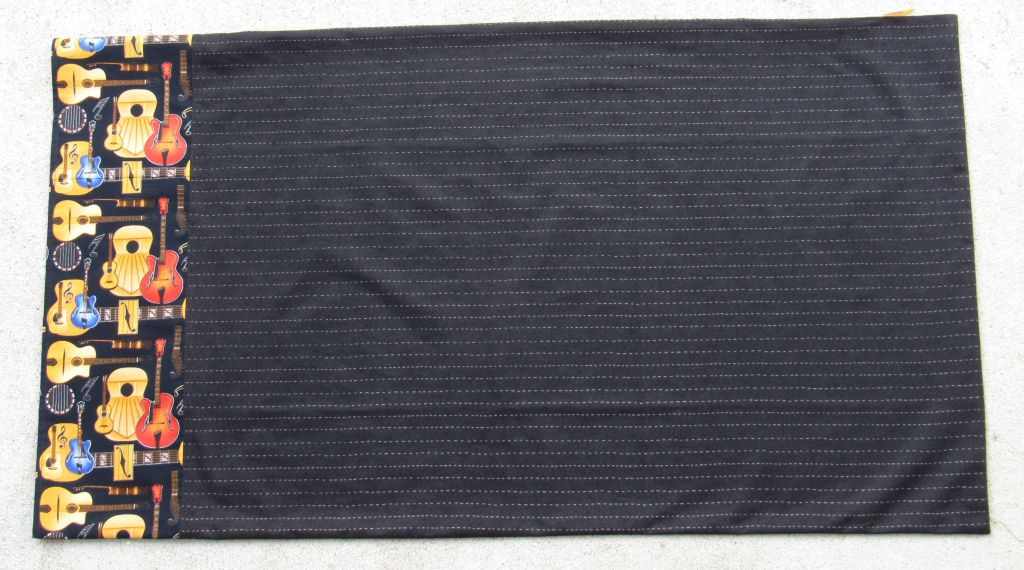To ease back into a sewing groove for the new year, I made a pillowcase for our son, Ross.
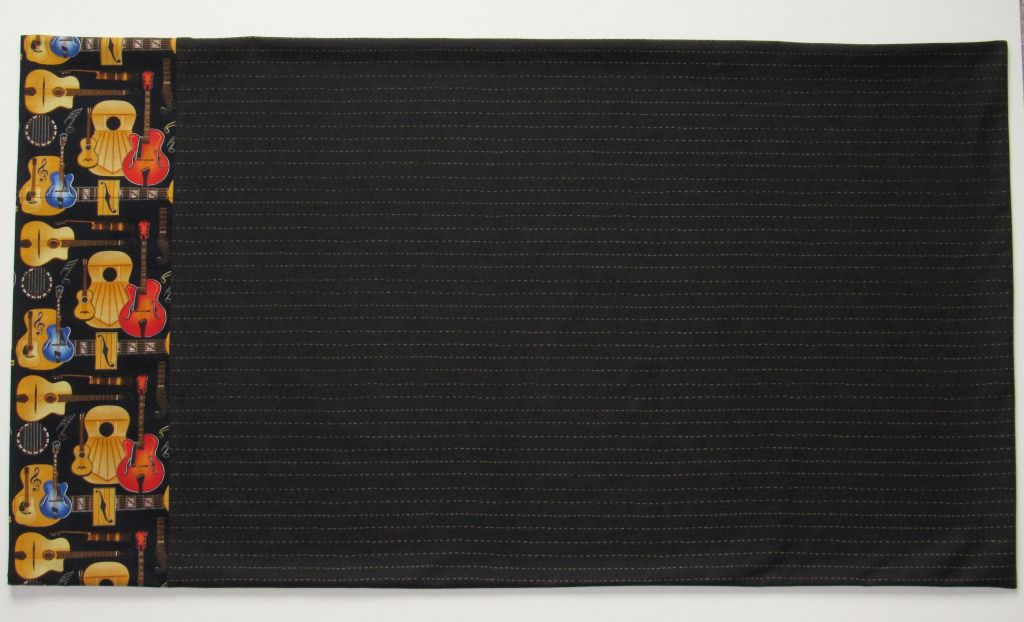
A couple years ago, he brought out the guitar pillowcase I made for him when he was a high school junior to show that it was cratering fast, hinting that a replacement would be nice.
This was the novelty fabric used for the pillowcase, and there was only a half yard of it.

I decided on a six-inch width for the cuff and no trim piece because I didn’t have any coordinating fabric for one. I cut a window in a sheet of copy paper to determine the best way to center and show off the images in the print.

Cutting a width-of-fabric strip would have been the easiest way to go, but then most of the guitars would be oriented horizontally, which looked bad.
I shifted the template 90 degrees and played.
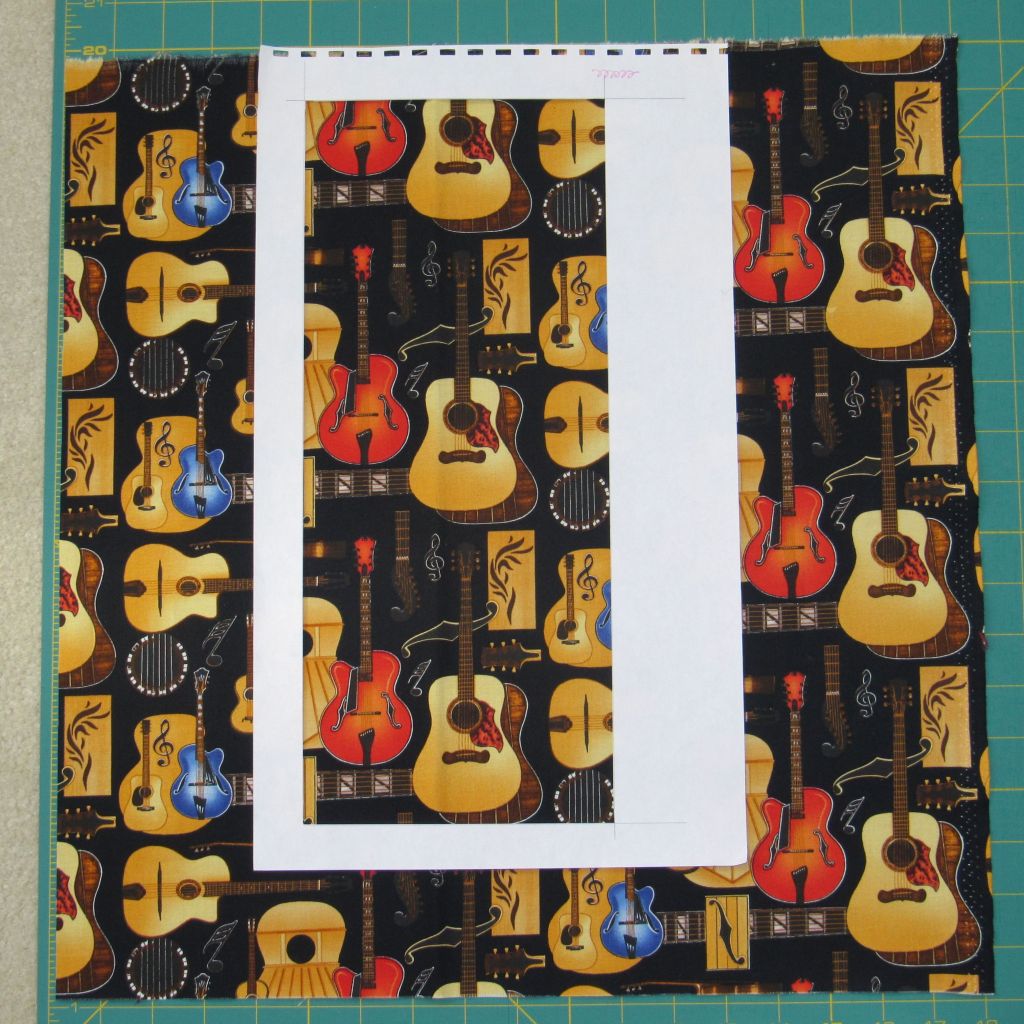
The cropping shown below looked the best. It would have been a mistake not to include the bright blue and orange colors in the design. Those pops of color would offer some needed contrast to an overall dark color scheme.
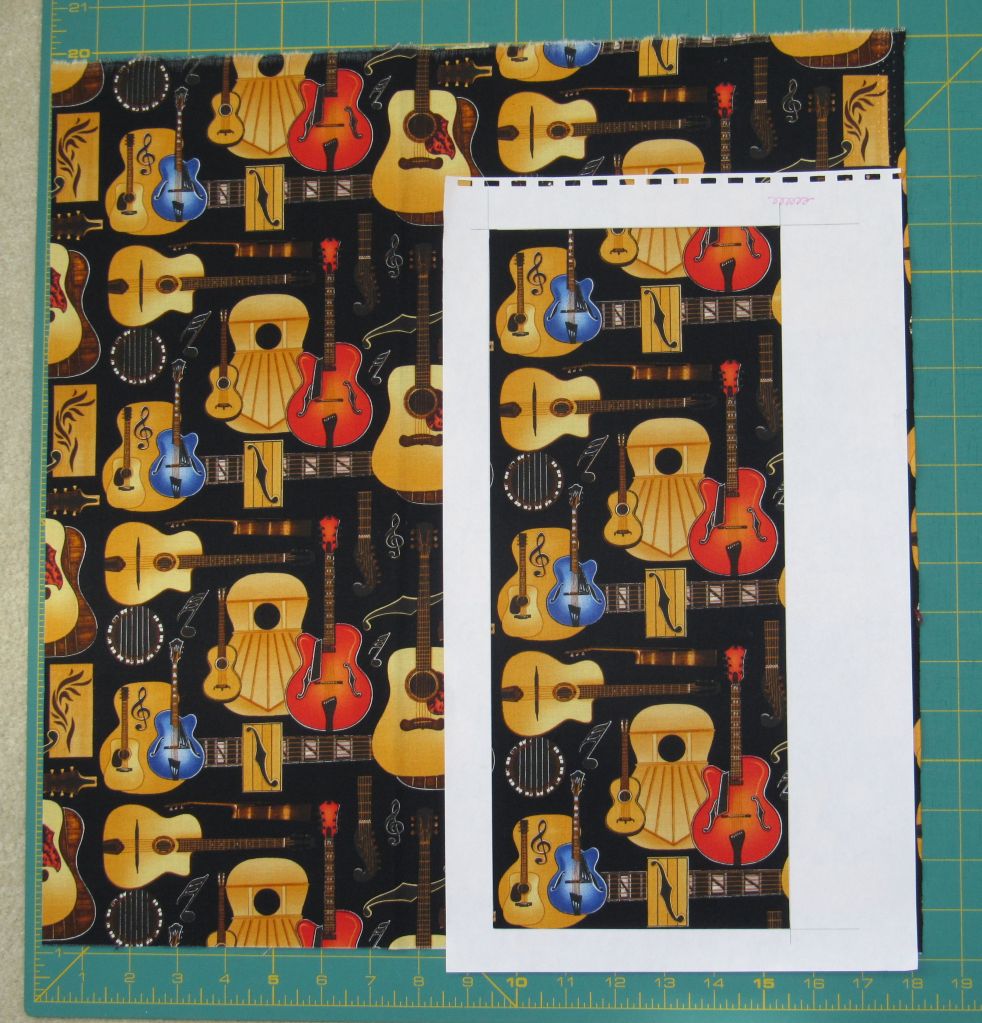
I cut three eight-inch wide sections from the leftover fabric to give myself plenty of breathing room and turned to the internet for guidance on print matching.
Fortunately, I still had some fabric glue from making The Bias Tape quilt.

Before turning under and pressing a crease into the fabric edge in preparation for gluing it to the other piece, I drew a pencil line one-quarter inch from the edge on the wrong side so I would have a precise, visible sewing line. I’ve never had much confidence sewing on a fabric crease, so this helped a lot.
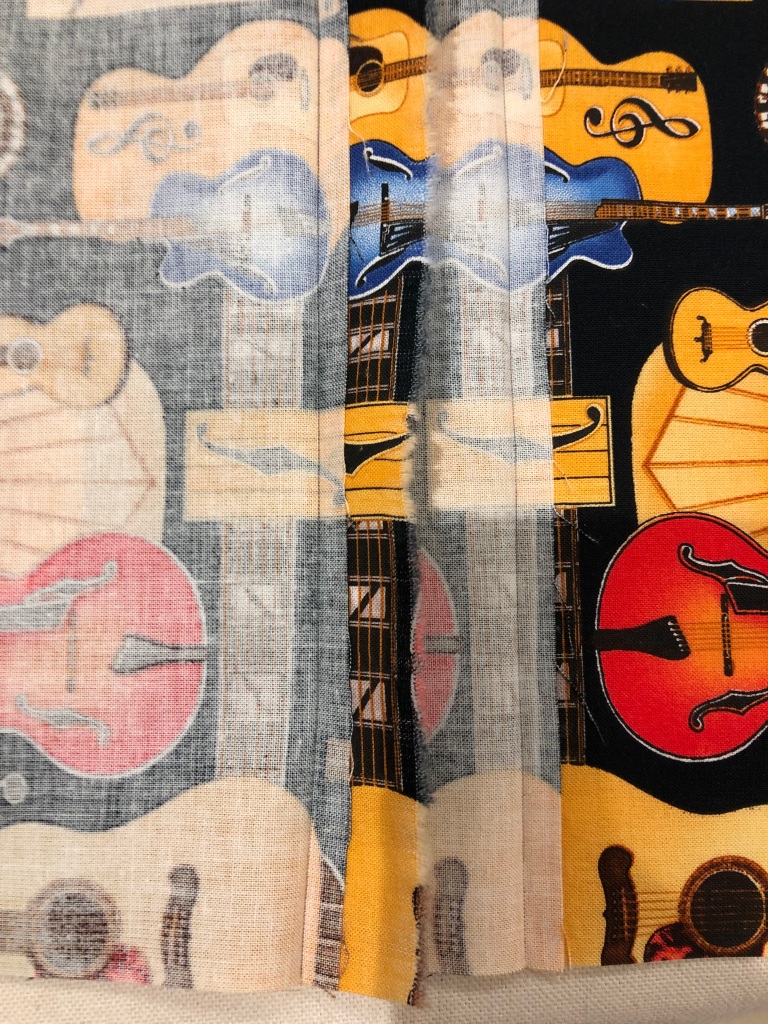
It was a relief to see that this technique worked as well as it did, particularly since it was my first attempt.

Since there was plenty of it, the main fabric for the pillowcase was used to back the cuff.
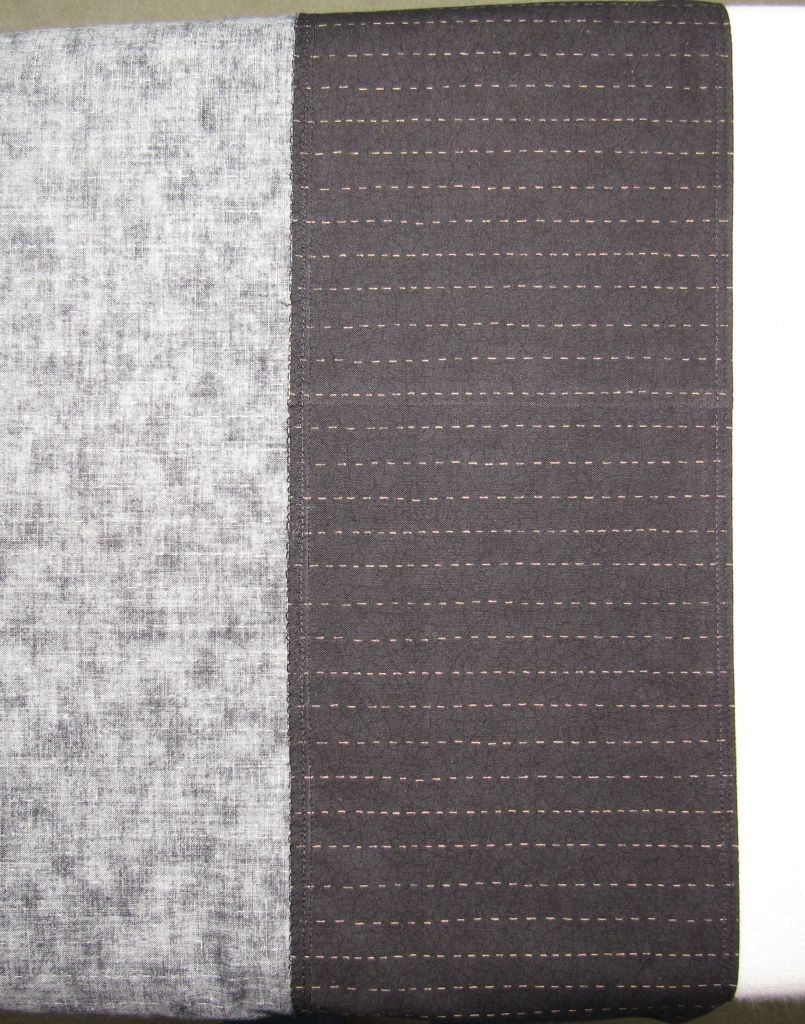
I trimmed and finished the seam allowance with an overcast stitch and top stitched on both sides of the cuff.

The lack of contrast between the cuff and case fabrics made it difficult to keep the edge of the presser foot aligned while top stitching. Gently pressing this thin, white plastic card against the ditch of the seam provided the necessary contrast and worked perfectly.
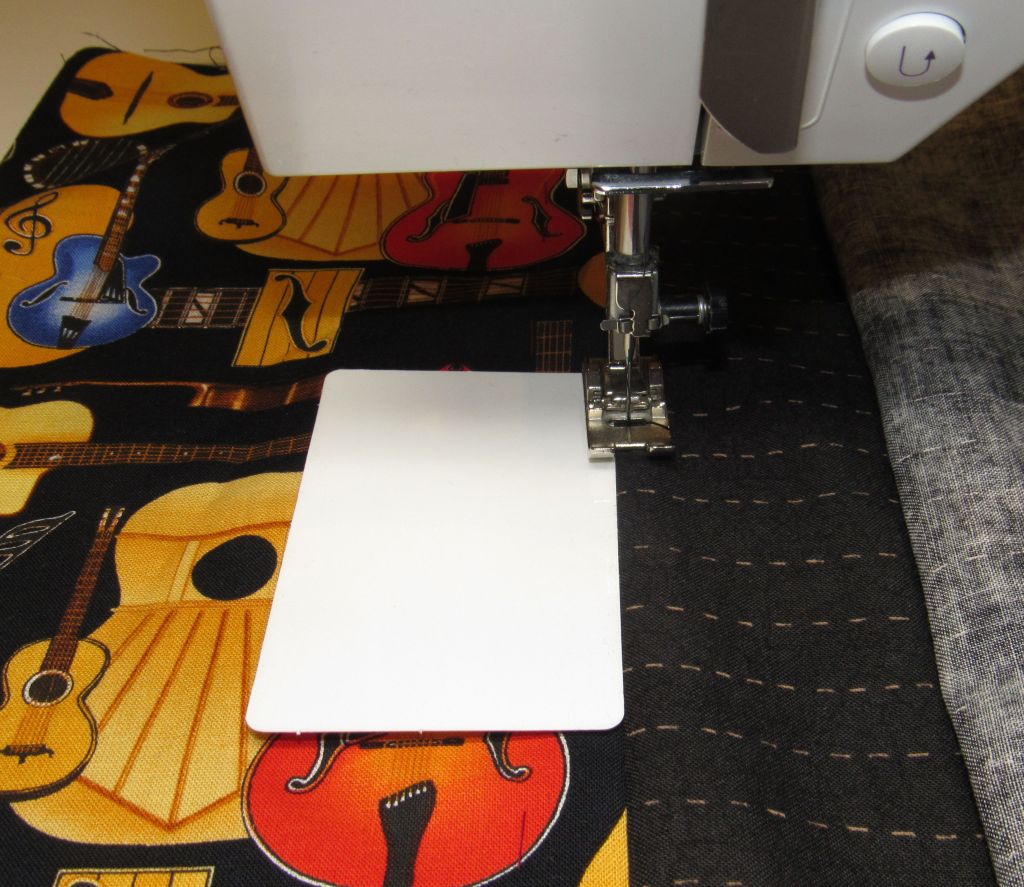
I hope Ross likes it.
